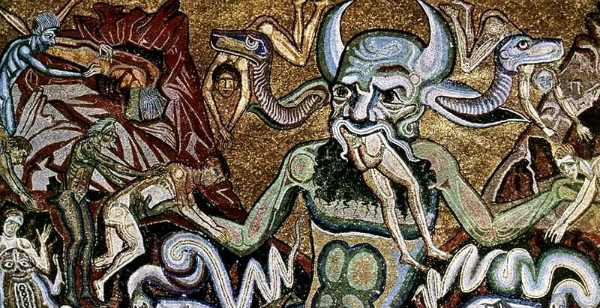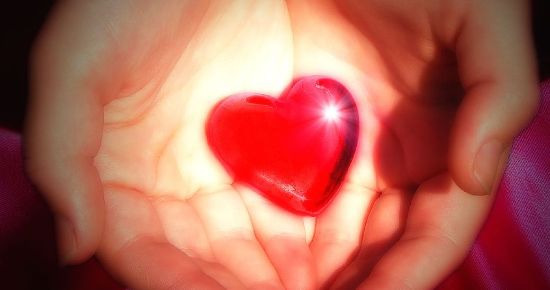What are demons?
This question comes up for me because of my birthday Tarot reading. Every year I consult the cards to get a hint of the themes the year will bring. This year the cards reassured me that I am balanced in the powers of air, fire, water, and earth, I know who I am and have the strength to face the circumstances life throws at me.
Then the cards told me that I would be facing every unresolved fear and karmic debt and demon of my life.
That’s a daunting prospect. I’m rolling up my sleeves and figuring out what that means. After a few decades of living I’ve got a pretty good handle on my fears. I think karmic debts you just deal with as you go, that’s part of life’s journey. But what’s a demon?
It’s a fair question. Many Pagan traditions don’t recognize demons, but my tradition does; demonology is part of Ceremonial Magic.
European (Graeco-Roman) Paganism acknowledges the existence of spirits. “Demon” derives from the Greek word “daemon”, a spirit midway between people and deities. Daemones could be either hostile or helpful to people. The Latin word “angelus” described the same sort of spirit; this word passed into English as “angel”. Eventually “angel” came to mean helpful spirit and “demon” described a hostile spirit. Contemporary ceremonial continues that division, with angels treated as powerful beings friendly to humans, while demons are lesser beings, indifferent or mischievous or actively hostile.
Medieval grimoires treated demons as fierce spirits with powers that could be harnessed to the magician’s will through compulsion. This is called “goetic” magic and has its own rituals, tools, invocations and banishings. The most famous and popular book of goetic magic is the Lesser Key of Solomon the King which lists 72 demons who can be invoked to assist the magician in specific tasks such as finding lost items, telling the future, locating a fortune, and procuring love. Other demons have loftier powers such as teaching the sciences and mending friendships. The demons are described in meticulous detail; they are expected to physically appear to the magician in the course of the operation.
Twentieth-century editions of goetic grimoires treat these demons as figments of the mind. Crowley arguably started the trend with his version, edited by Lon DuQuette and Christopher Hyatt as Aleister Crowley’s Illustrated Goetia: Sexual Evocation, where Crowley says bluntly, “The spirits of the Goetia are portions of the human brain.”
In psychologized magic a demons are projections of our unresolved issues and repressed selfish desires, embodying the infantile need to have what we want immediately. In the culture at large demons have also come to represent internal processes; we often say someone who committed suicide was “tortured by inner demons”.
Twenty-first century Pagans are challenging the psychologization of the gods. Deities are not just aspects of the universal human mind, archetypes, but are living beings with an external reality beyond the human psyche, capable of entering into relationship with humans. If this is so, if the gods are real, what about the other spirits that earlier Pagans treated as having independent reality? Doesn’t the de-psychologization of deity at least imply the de-psychologization of demons?
If demons are real, how do we deal with them? I’ve done a bit of goetia, and I find myself uncomfortable with the whole apparatus of threat and compulsion. A more contemporary approach treats the demon pretty much like an untrained dog. Instead of the fierce punishments of previous generations, the modern magician uses firm discipline to teach the demon, correcting unwanted behavior and rewarding the desired behavior. The magician works with the demon to become useful, and the demon gets to progress up the developmental ladder, so that both are uplifted at the same time.
As a theurgist I know that the Chaldean Oracles counseled the magician to protect herself from the demon-dogs who sought to disrupt her spiritual operations. This seems to me to be prudent, and the known apparatus of circle and talisman seems up t the task. I wear a protective amulet every day and use specific protections while performing theurgic evocations.
Whether the demon is be a projection of mind or a lesser spirit progressing spiritually by working with a human, neither case seems to be adequately described by the medieval imagery of a wolf with a serpent’s tail vomiting flames, or the power to turn up chests of gold. It seems to me that those descriptions need updating. That seems like one of those major tasks that could take the operator into some very dark places. I’m not volunteering for the task, but I’m interested in the work of anyone who wanted to take it on.
For myself, I am aware of the possibility that the demons I face are real, while remaining open to what they mirror to me in myself. If I can learn to treat demons with gentle respect maybe I can acquire a gentler respect for my own shortcomings; if so, that would be a year well spent.



